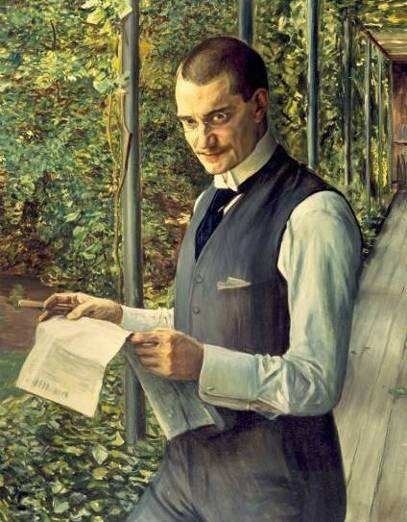Name Franz Koenigs | ||
 | ||
Franz Wilhelm Koenigs (b. Kierberg (near Bruhl), September 3, 1881; d. Cologne, May 6, 1941) was an international banker and art collector.
Koenigs was born a German citizen, his father Ernst Friedrich Wilhelm Koenigs was a German Banker; his mother Johanna Bunge was of Dutch descent.
Franz Koenigs to follow in the footsteps of his father and uncle Felix Koenigs, becamedirector manager and joint partner of three banks: Delbrueck Schickler & Co in Berlin, Delbrueck von der Heydt in Cologne, and Rhodius Koenigs in Amsterdam, The Netherlands. He founded the latter after the first World War (1920) with two cousins from the Bunge Limited side of the family Alfred and Felix Rhodius on Keizersgracht 119-121, Amsterdam.
His uncle Felix Koenigs was a banker and director at Delbrueck Leo & co, the later Delbrueck Schickler & Co. He developed the Villenkolonie Grunewald. He supported the Berliner Secession and was a passionate collector and friend of artists like Adolf Bruett, Max Klinger, Wilhelm Leibl, Hans Olde and sculptor Otto Lessing. After his death during the World Exhibition in Paris, his collection of sculptures by Auguste Rodin, and painters like Giovanni Segantini, was legated to the National Gallery.
Felix as a banker and collector set an example for Franz Koenigs. In 1941 he fell from a train platform at Cologne station in front of a train and died. At present descendants believe that the Nazis murdered him by throwing him under a train.
He collected an impressive number of drawings, known as the Koenigs collection. Due to the depression he came into financial problems and pawned the art collection, under the condition that it should be exhibited in the museum Boymans. In 1939 the Jewish owners of the bank liquidated the bank and at that moment Koenigs was not able to pay back the loan, subsequently the bank sold the collection to the owner of the museum Van Beuningen.
In January 1941 Van Beuningen sold the whole collection to Hans Posse, who acted for the Fuhrermuseum in Linz. During the war, the Allies decided with the Joint Declaration that all transactions between the occupied countries and the German occupier would be invalid, and that all art should be returned.
Soviet troops looted the art collection after the war and transported it to the Soviet Union. The Soviet authorities denied for a long time that they had the art collection. However, in the nineties, it became clear that Soviet troops had looted the art collection. The major part of the collection was exhibited in the Pushkin Museum in Moscow and a minor part in Kiev. Honoring the request of the Dutch government, the Ukrainian authorities returned the part of the collection that was in Kiev. More than 300 drawings from the same collection were traced to Moscow 10 years ago, but Russia has so far refused to hand them back.
